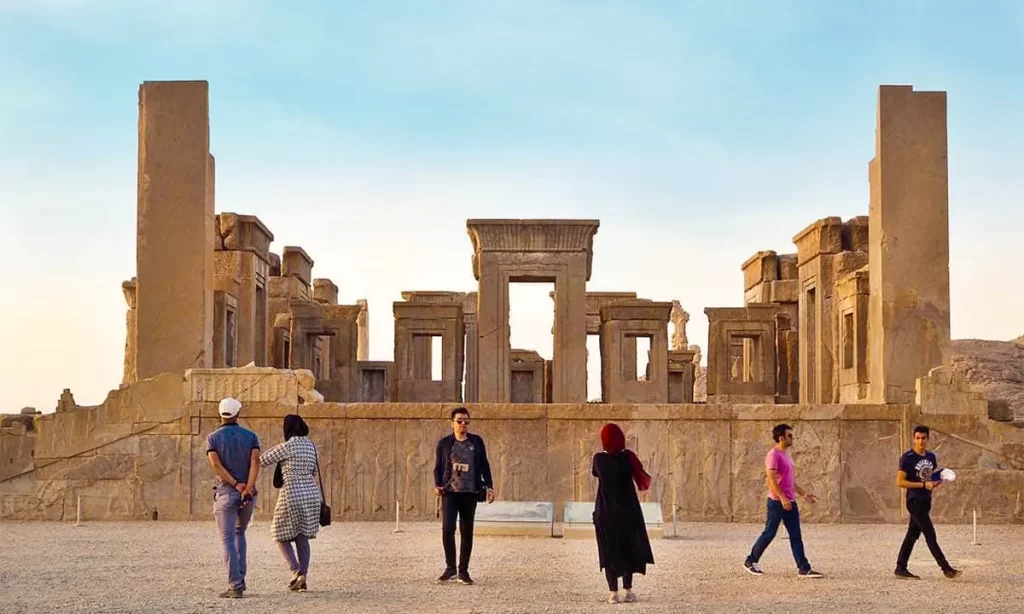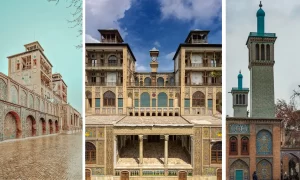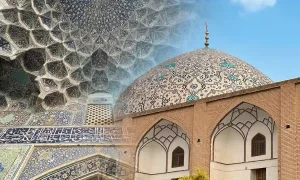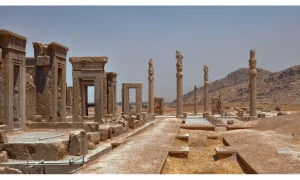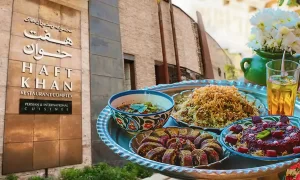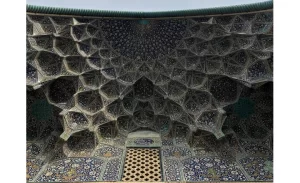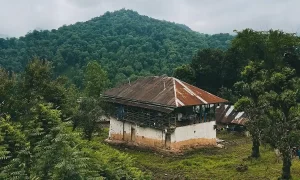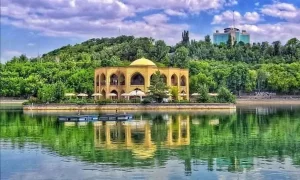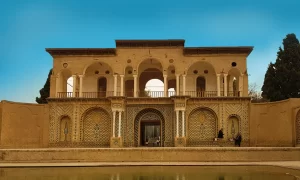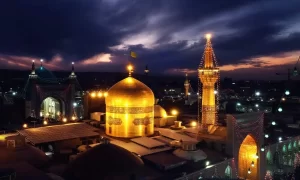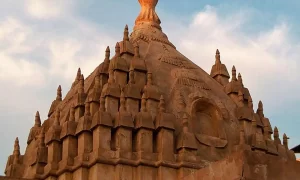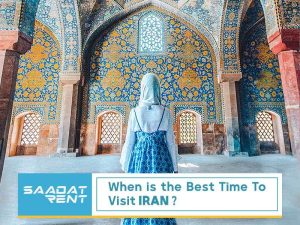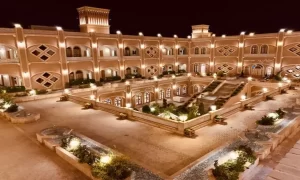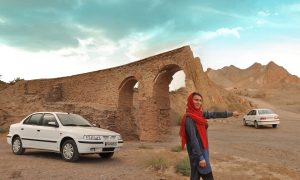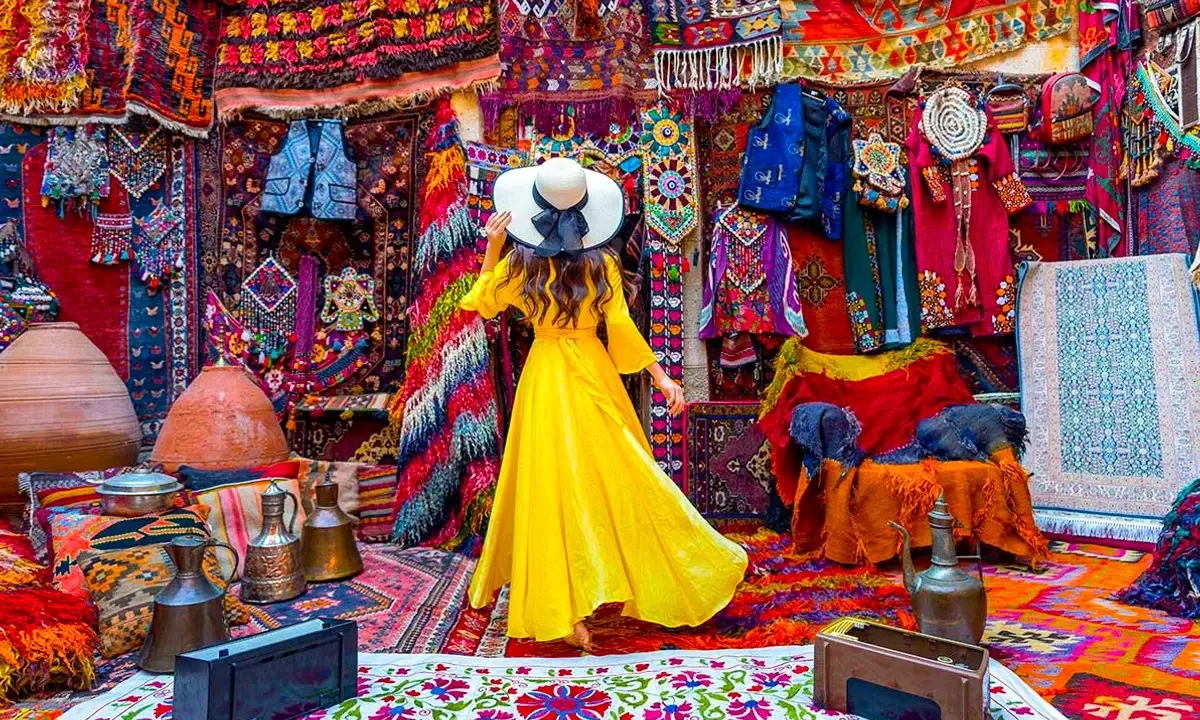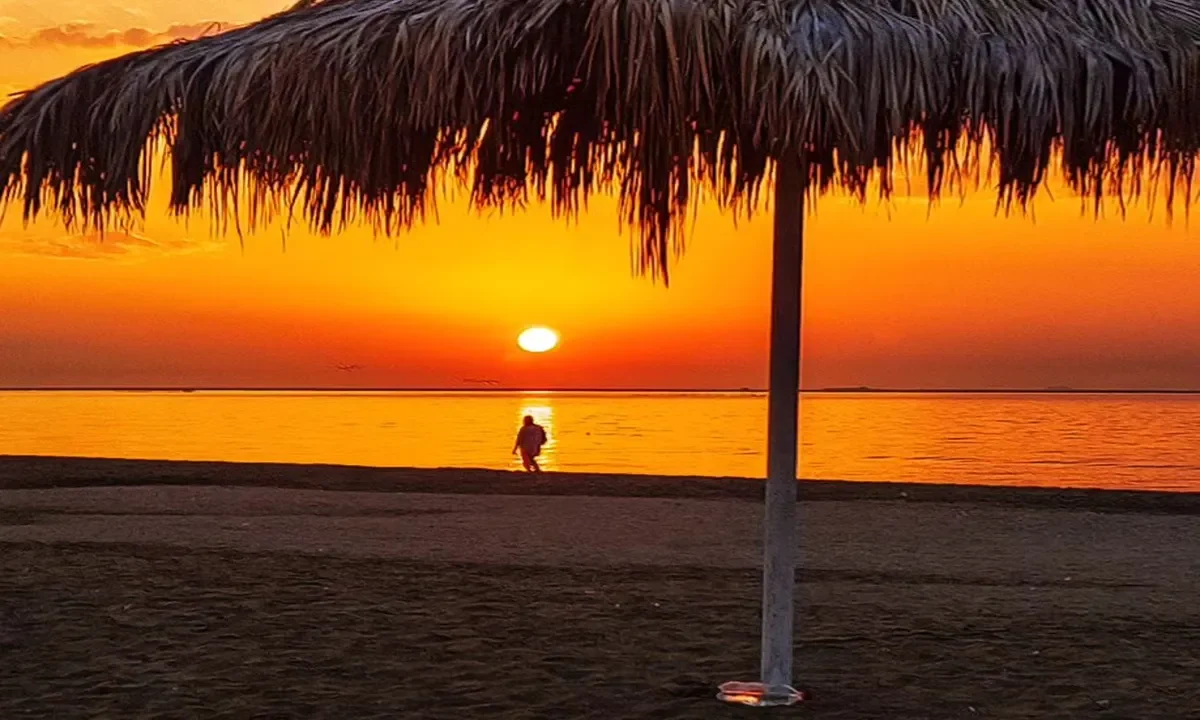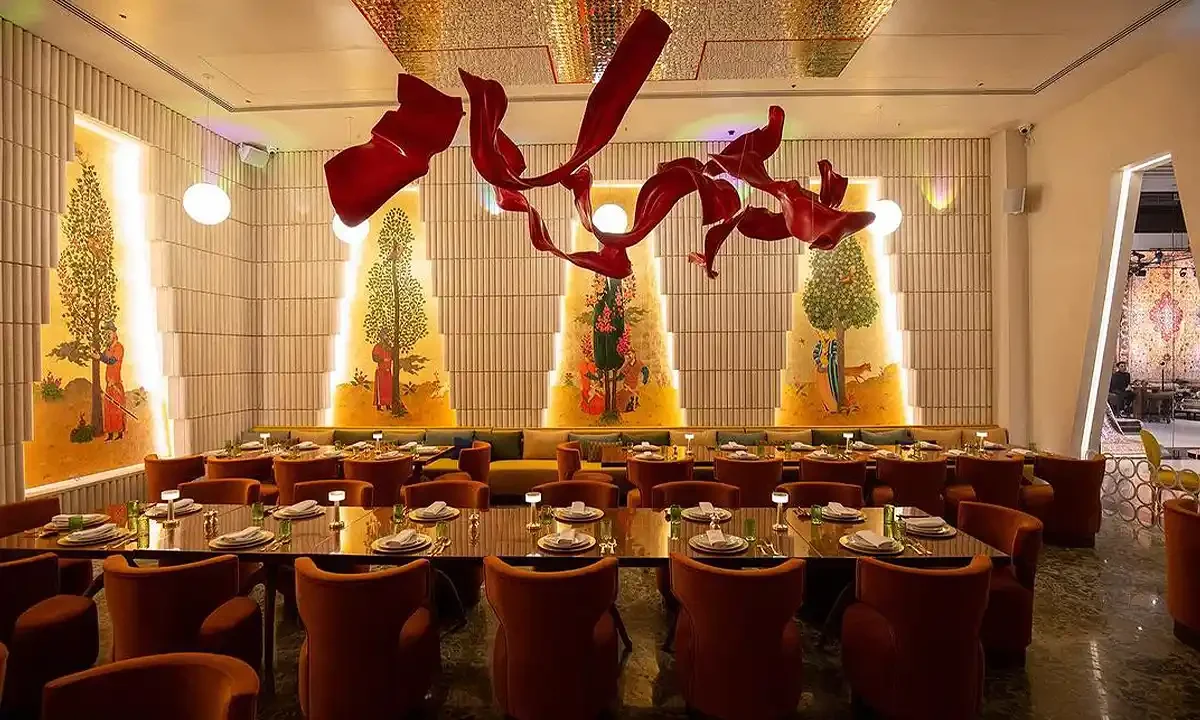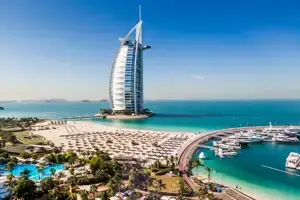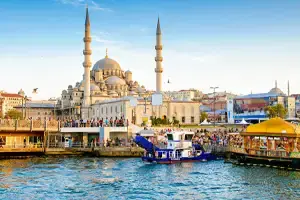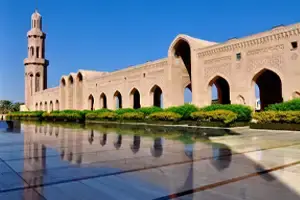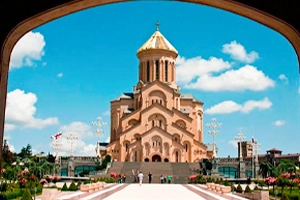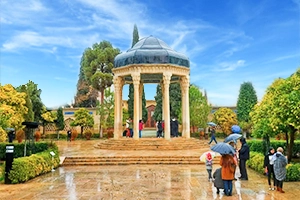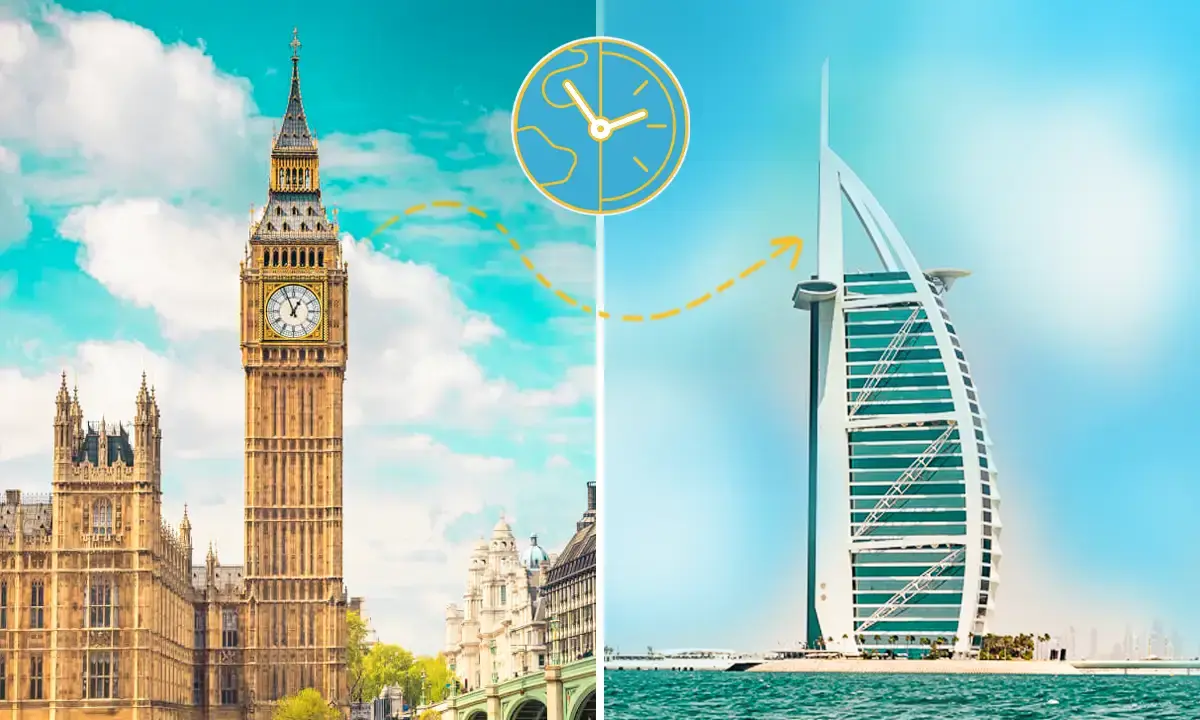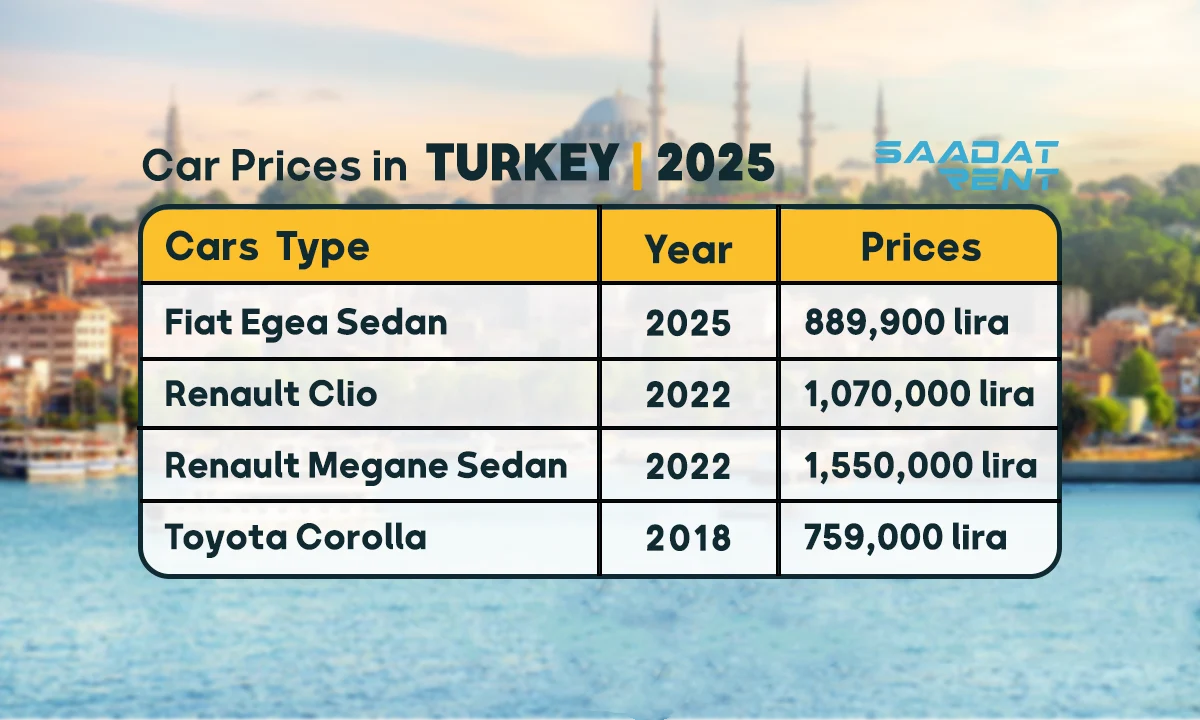If you’re planning to visit the mysterious land of Iran, let me tell you something upfront; Iran will amaze you! Things to do in Iran are unique, wonderful, and surprising. That’s why we decided to gather a comprehensive guide on Iran’s attractions to make sure no one misses Iran’s must-see attractions.
Visit the historic sites of Tehran, Isfahan, and Shiraz. Explore the awe-inspiring nature of northern forests in Iran. And pay a visit to Iran’s serene southern islands. This way you’ll discover most of Iran’s top attractions. However, there are still many more destinations in Iran that suit almost any preference. Besides, we’ll cover some finger-licking Persian dishes you should try.
So, without further ado, let’s review the best things to do in Iran!
The Best Things to Do in Iran
Here we have gathered a list of the best things to do in Iran. These places are the highlights of this ancient land. We have also added their location for better access.
Persepolis
Persepolis, located near the modern city of Shiraz, is one of Iran’s most iconic ancient sites and a proud UNESCO World Heritage Site. This majestic ceremonial capital of the Achaemenid Empire reflects the grandeur and power of one of the world’s earliest great civilizations. Founded by Darius the Great in the 6th century BCE, Persepolis showcases exquisite Persian architecture, intricate stone reliefs, and monumental staircases, all testifying to the empire’s artistic and political achievements.
The history of Persepolis spans several centuries, serving as a hub for royal ceremonies and celebrations, especially the Nowruz (Persian New Year). The name ‘Persepolis’ means ‘City of the Persians,’ symbolizing the heart of Persian identity and imperial authority. The ruins include grand palaces, audience halls, and treasury buildings, each telling stories of conquest, diplomacy, and cultural exchange across the ancient world.
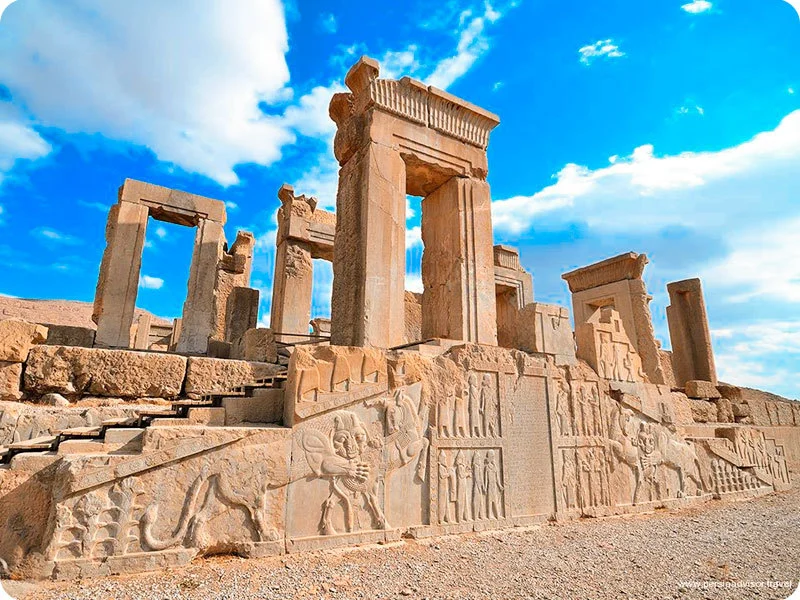
Golestan Palace, located in the bustling heart of Tehran, stands as one of the city’s most significant historical landmarks and a proud UNESCO World Heritage Site. This palace complex, one of the oldest in the capital, showcases the luxurious splendor of the Qajar era, blending sophisticated Persian craftsmanship with Western influences, a testament to the cultural exchanges of the 18th and 19th centuries.
The palace’s history dates back to the Safavid dynasty, with major reconstructions and additions during the Qajar dynasty, making it a symbol of the country’s rich history. The name ‘Golestan’ means ‘palace of flowers’ in Persian, reflecting its beautifully landscaped gardens and richly decorated rooms. The complex consists of 17 structures, including palaces, museums, and halls. Each element of Golestan tells a story of royal life, political events, and artistic development in Iran.
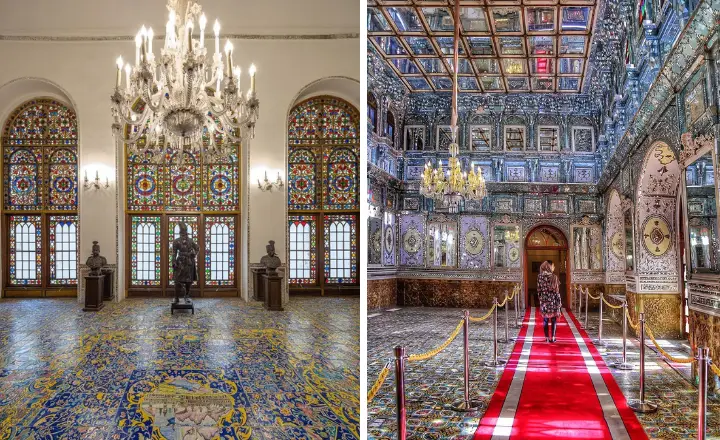
Nasir al-Mulk Mosque
The Nasir al-Mulk Mosque, also known as the Pink Mosque, is a mesmerizing site located in Shiraz, Iran. Famous for its stunning stained glass windows, the mosque creates a kaleidoscope of colors when sunlight streams through in the morning. The intricate tile work and the vibrant colors of the interior make it one of the most photographed mosques in the world. Visitors should aim to visit early in the morning to experience the full splendor of the colorful light display. The Nasir al-Mulk Mosque is a true architectural gem and a must-see for anyone traveling to Shiraz.
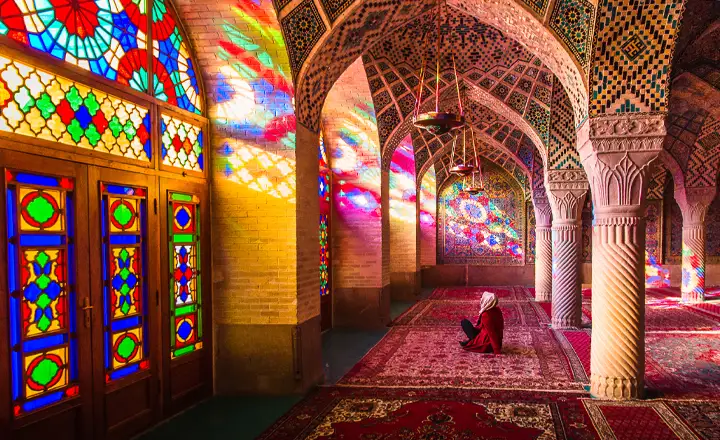
The Tomb of Hafez, located in Shiraz, Iran, is a serene and beautiful site dedicated to the famous Persian poet Hafez. Surrounded by lush gardens, the tomb is a place of pilgrimage for poetry lovers and those seeking inspiration from Hafez’s timeless works. The elegant marble tombstone is engraved with excerpts from his poetry, and the pavilion above it features stunning tile work and calligraphy. Visitors can stroll through the peaceful gardens, enjoy the tranquil atmosphere, and even sit and read Hafez’s poetry in the surrounding pavilions. A visit to the Tomb of Hafez is a must for anyone interested in Persian literature and culture.
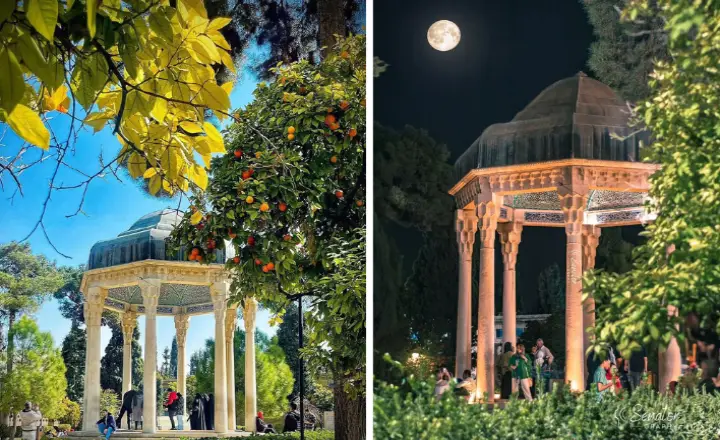
Khajoo Bridge, located in Isfahan, Iran, is one of the most iconic and picturesque bridges in the country. Built during the Safavid dynasty, this historic bridge not only serves as a crossing over the Zayandeh River but also functions as a beautiful public space. The bridge features stunning arches, intricate tile work, and spacious pavilions where visitors can relax and enjoy the view. In the evenings, the bridge is beautifully illuminated, creating a magical atmosphere. It is a popular spot for both locals and tourists to gather, enjoy traditional music, and take in the scenic beauty of the river. A visit to Khajoo Bridge is a must for anyone exploring Isfahan.
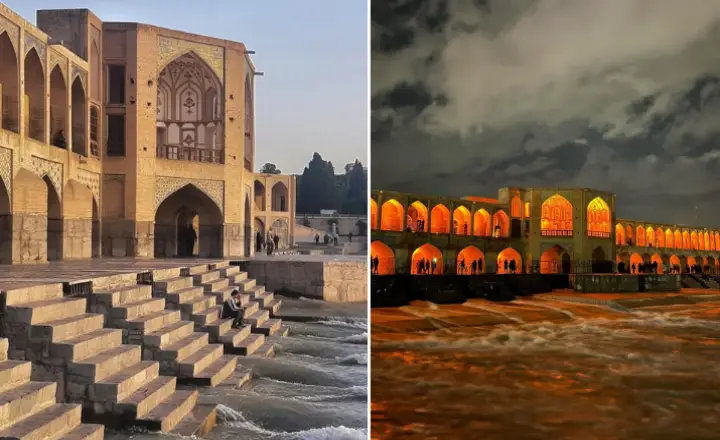
Sheikh Lotfollah Mosque
Sheikh Lotfollah Mosque, located on the eastern side of Naqsh-e Jahan Square in Isfahan, Iran, is a masterpiece of Safavid architecture. Known for its stunning interior and exterior tile work, the mosque features a unique single dome and no minarets, setting it apart from other mosques. The intricate mosaics, delicate calligraphy, and the beautifully designed dome with its peacock tail pattern create an awe-inspiring sight. The mosque was originally built as a private place of worship for the royal court, adding to its unique charm and elegance. Visitors can marvel at the stunning details and experience the serene ambiance of this architectural gem.
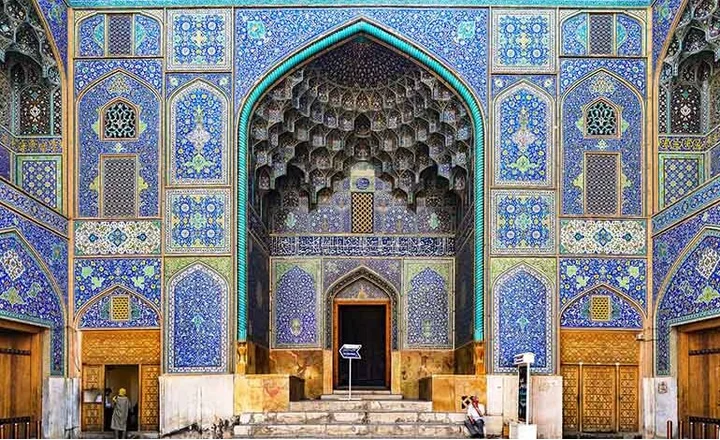
Eram Garden, located in Shiraz, Iran, is a historic Persian garden renowned for its stunning beauty and tranquil atmosphere. This UNESCO World Heritage Site features lush landscapes, tall cypress trees, and vibrant flowerbeds, all meticulously designed to create a serene environment. At the heart of the garden stands the beautiful Eram Palace, with its elegant architecture and intricate tile work. Visitors can stroll along the garden’s pathways, enjoy the refreshing scents of various flowers, and relax by the central pool. Eram Garden is an ideal spot for a leisurely afternoon, offering a peaceful escape from the hustle and bustle of the city. It’s a must-visit destination for nature lovers and those seeking a glimpse of traditional Persian garden design.
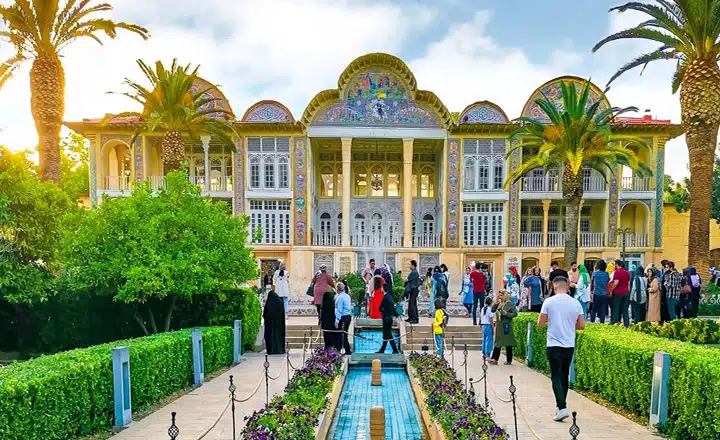
- Location: نیایش, Shiraz, Fars Province, Iran
Naqsh-e Jahan Square, also known as Imam Square, is a historic and breathtaking square located in the heart of Isfahan, Iran. This UNESCO World Heritage Site is one of the largest city squares in the world and is surrounded by magnificent buildings from the Safavid era. Key attractions include the grand Imam Mosque, the exquisite Sheikh Lotfollah Mosque, the impressive Ali Qapu Palace, and the bustling Qeysarieh Bazaar. The square’s vast open space is perfect for leisurely strolls, enjoying traditional music, and taking in the vibrant atmosphere. Naqsh-e Jahan Square is a hub of cultural, architectural, and historical significance, making it a must-visit destination for anyone traveling to Isfahan. Don’t forget to bring your camera to capture the stunning architecture and lively scenes.

- Location: Isfahan, Square, Iran
Si-o-Se Pol Bridge, also known as the Bridge of 33 Arches, is a striking historical bridge located in Isfahan, Iran. Built during the Safavid era, this architectural marvel spans the Zayandeh River and is renowned for its 33 graceful arches. The bridge serves as both a pedestrian walkway and a public gathering place, offering picturesque views of the river and the surrounding area. In the evenings, the bridge is beautifully illuminated, creating a captivating and romantic atmosphere. Si-o-Se Pol Bridge is a popular spot for locals and tourists to enjoy leisurely walks, take memorable photographs, and experience the cultural vibrancy of Isfahan. A visit to this iconic bridge is a must for anyone exploring the city’s rich heritage.
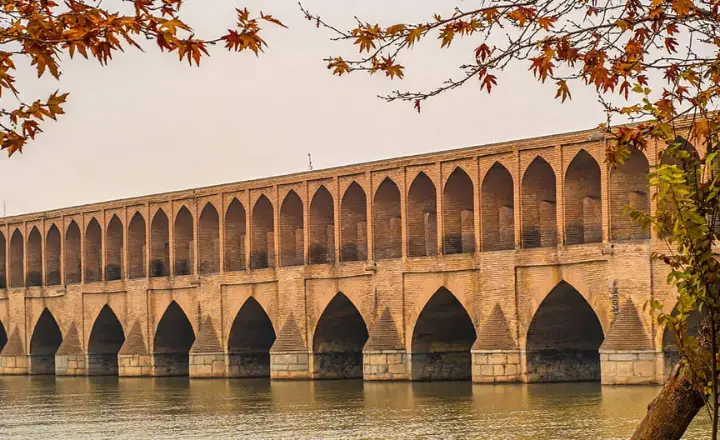
Vank Cathedral, also known as the Holy Savior Cathedral, is a stunning and historically significant church located in the Armenian Quarter of Isfahan, Iran. Built in the 17th century, this cathedral is a beautiful blend of Armenian and Persian architectural styles. Visitors can admire the cathedral’s exquisite frescoes, intricate tile work, and the gilded central dome adorned with biblical scenes. The cathedral complex also includes a museum that showcases Armenian artifacts, manuscripts, and historical documents. Vank Cathedral is a testament to the rich cultural and religious diversity of Isfahan and is a must-visit for those interested in history, art, and architecture. The serene courtyard and peaceful ambiance make it a perfect place for reflection and exploration.
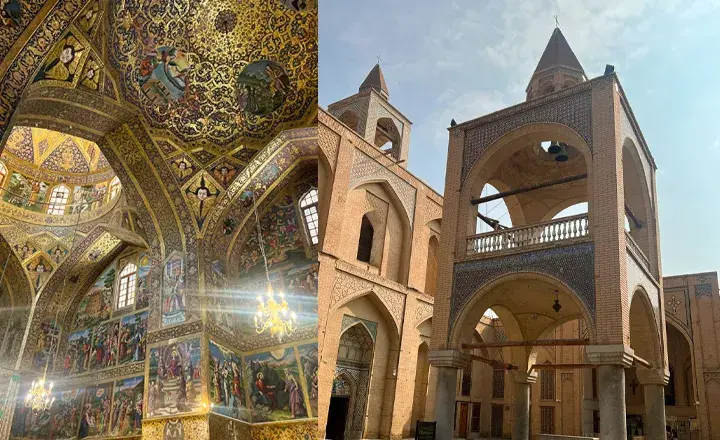
Rudkhan Castle
Rudkhan Castle, also known as Roudkhan Castle, is a medieval fortress located in the lush forests of Gilan Province, Iran. This impressive castle dates back to the Sassanid era and is perched on a hilltop, offering breathtaking views of the surrounding landscape. The hike to the castle involves climbing over a thousand stone steps through dense forest, making it an adventurous journey for visitors. Once at the top, you can explore the well-preserved structure, including its watchtowers, large courtyard, and various rooms. The castle’s strategic location and architectural ingenuity are a testament to its historical significance. Rudkhan Castle is a must-visit for history enthusiasts and nature lovers, providing a unique glimpse into Iran’s rich past combined with the beauty of its natural environment.
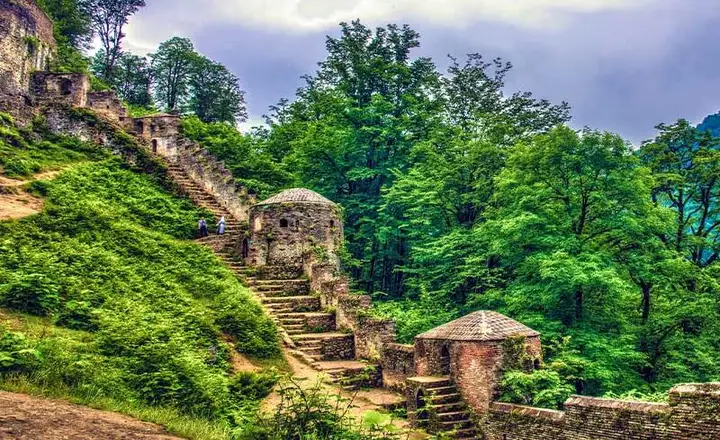
The Shushtar Historical Hydraulic System, located in the city of Shushtar in southwestern Iran, is an ancient and ingenious network of dams, tunnels, canals, and watermills dating back to the 5th century BC. This UNESCO World Heritage Site was designed to manage water from the Karun River and is a remarkable example of early engineering. Visitors can explore various components of the system, including the Gargar Bridge and its associated watermills, the Mizan Dam, and the beautiful waterfalls created by the diverted water. The site offers a fascinating glimpse into the advanced technological achievements of ancient Persia and its impact on agriculture and daily life. The Shushtar Historical Hydraulic System is surely among the best places to visit in Khuzestan province in Iran.
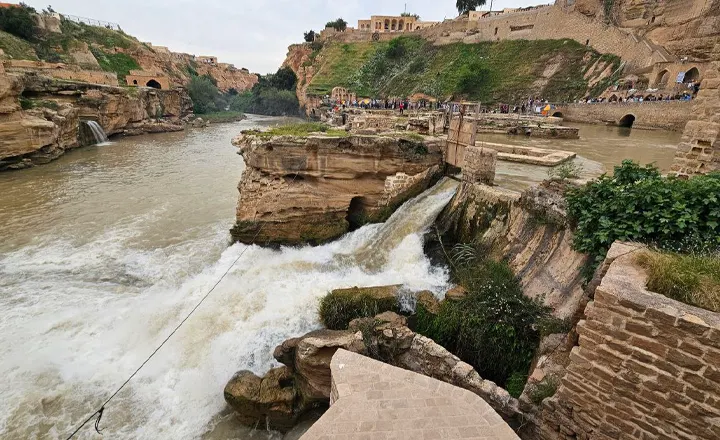
Jame' Mosque of Isfahan
The Jame’ Mosque of Isfahan, also known as the Friday Mosque, is one of the oldest and most impressive mosques in Iran, dating back to the 8th century. Located in the historic center of Isfahan, this UNESCO World Heritage Site showcases a blend of architectural styles from different Islamic periods, reflecting the city’s rich history. Visitors can marvel at the mosque’s grand courtyard, intricate tile work, stunning domes, and the beautifully designed prayer halls. The mosque’s four iwans, each uniquely decorated, are a highlight, as is the exquisite mihrab (prayer niche) in the winter prayer hall. The Jame’ Mosque of Isfahan is not only a place of worship but also a testament to the artistic and architectural achievements of Islamic civilization. A visit here provides a deep insight into the cultural and historical heritage of Isfahan.
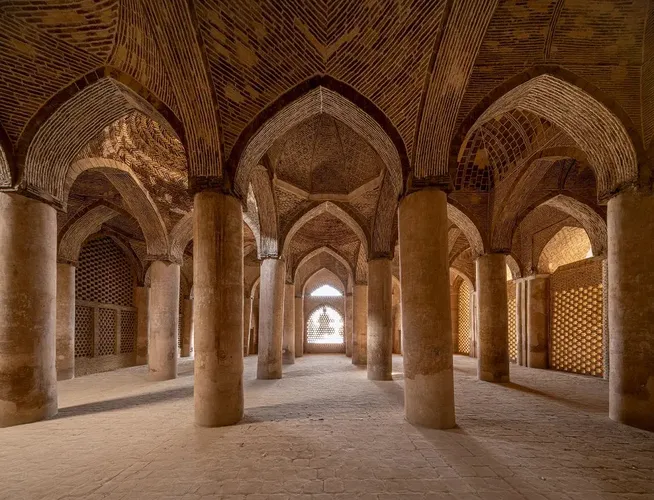
Chehel Sotoun Palace, located in Isfahan, Iran, is a beautiful pavilion set within a lush garden, known for its stunning architecture and historical significance. The name “Chehel Sotoun” translates to “Forty Columns,” inspired by the twenty slender wooden columns at the entrance, which, when reflected in the palace’s long pool, appear to double. Built in the 17th century during the Safavid era, the palace served as a place for entertainment and receptions. Inside, visitors can admire exquisite frescoes, intricate tile work, and stunning murals depicting historical scenes and royal gatherings. The surrounding garden, with its fountains and greenery, provides a serene and picturesque setting. Chehel Sotoun Palace is a must-visit for anyone interested in Persian art, architecture, and history, offering a glimpse into the grandeur of the Safavid dynasty.
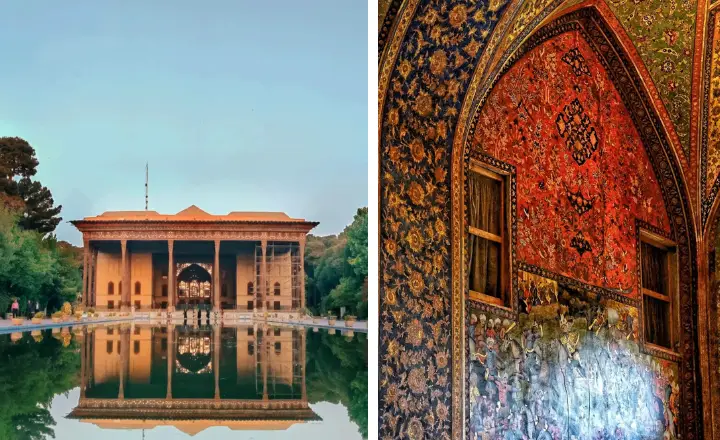
- Location: Isfahan, Sepah ST، Imam Hossein Square
Pasargadae, located in the Fars Province of Iran, is a UNESCO World Heritage Site and the ancient capital of the Achaemenid Empire. Founded by Cyrus the Great in the 6th century BC, this historic site is renowned for its significant archaeological remains and cultural heritage. Key attractions include the Tomb of Cyrus the Great, a simple yet majestic limestone structure that is a testament to the empire’s architectural prowess. Visitors can also explore the remains of the royal palaces, the fortified terrace, and the garden complex, which reflect the early examples of Persian garden design. Pasargadae offers a profound insight into the beginnings of the Persian Empire and its influence on later architectural and cultural developments. It is a must-visit for history enthusiasts and those interested in ancient civilizations.
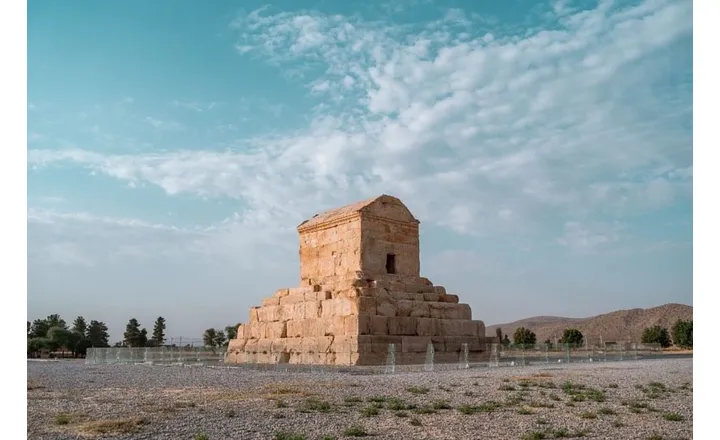
- Location: Madarsoleyman, Fars Province
Niavaran Palace, located in the northern part of Tehran, Iran, is a splendid historical complex that served as the residence of the last Shah of Iran, Mohammad Reza Pahlavi, and his family. The palace complex comprises several buildings, the most prominent being the Niavaran Palace itself, which is a blend of traditional Persian and modern architectural styles. Visitors can explore the luxurious interiors, including the opulent reception halls, private quarters, and a collection of exquisite artworks, furniture, and decorative items from around the world. The complex also includes the Sahebqaraniyeh Palace, the Jahan Nama Museum, and a beautiful garden where visitors can enjoy a leisurely stroll. Niavaran Palace provides a fascinating glimpse into the royal lifestyle of the Pahlavi era and is a must-visit for those interested in Iran’s modern history and royal heritage.
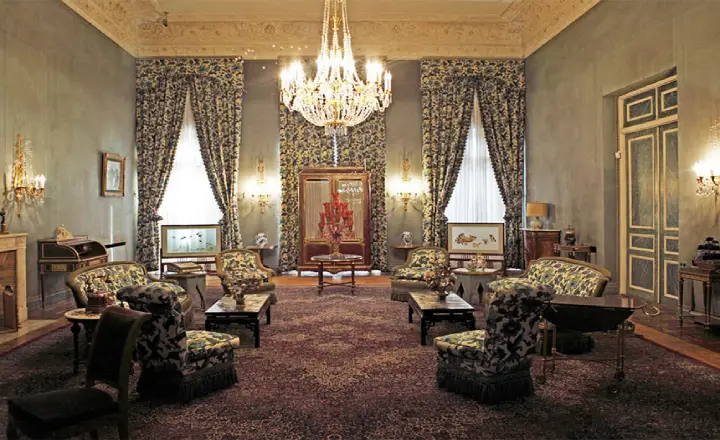
- Location: Tajrish, Niavaran Square
Taq-e Bostan
Taq-e Bostan, located near the city of Kermanshah in western Iran, is a remarkable site featuring a series of rock reliefs and carvings dating back to the Sassanid era. These intricate carvings are set within the picturesque natural setting of a mountain and an adjacent spring, making it a serene and visually stunning location. The most prominent reliefs depict royal hunting scenes, investitures of Sassanid kings, and various deities, showcasing the artistry and cultural significance of the period. The site also includes large arches, known as “taqs,” which house some of the most detailed carvings, including those of King Khosrow II. Taq-e Bostan offers visitors a unique glimpse into ancient Persian art, royal symbolism, and historical narratives. It is a must-visit for history enthusiasts and anyone interested in the rich cultural heritage of Iran.
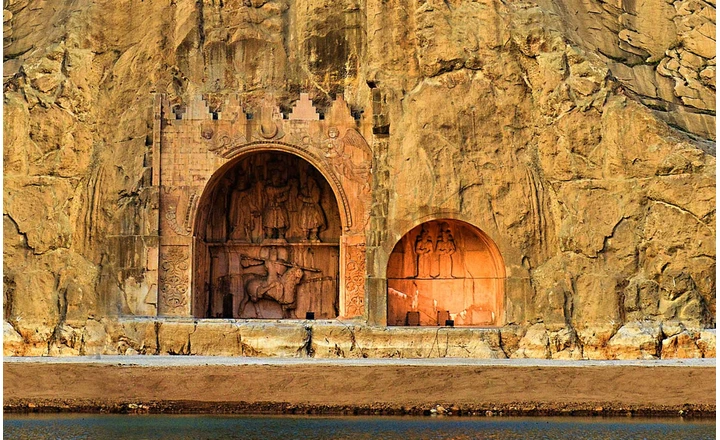
Chogha Zanbil, located near Susa in southwestern Iran, is an ancient Elamite complex and one of the best-preserved ziggurats in the world. Built around 1250 BC by King Untash-Napirisha, this UNESCO World Heritage Site was dedicated to the Elamite gods and served as a religious center. The ziggurat’s impressive structure consists of five staggered terraces, originally rising to a height of about 52 meters, although now only three levels remain. Visitors can explore the vast site, which includes the ziggurat, various temples, and the remnants of a sophisticated water management system. The intricate brickwork and inscriptions offer a fascinating insight into the religious and architectural practices of the ancient Elamites. Chogha Zanbil is a must-visit for history buffs and those interested in ancient civilizations, providing a unique glimpse into the grandeur of Elamite culture.
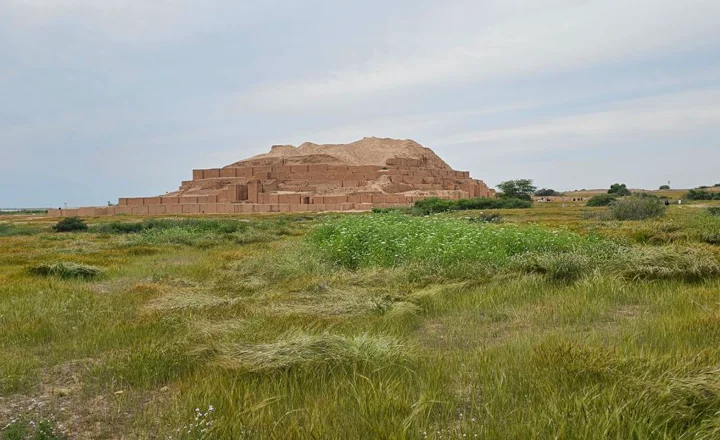
Tehran Museum
The Tehran Museum of Contemporary Art (TMoCA), located in the heart of Tehran, Iran, is one of the most important cultural institutions in the country. Opened in 1977, the museum houses an extensive collection of modern and contemporary artworks by both Iranian and international artists. Visitors can explore galleries featuring works by renowned artists such as Andy Warhol, Pablo Picasso, Vincent van Gogh, and many prominent Iranian artists. The museum’s unique architecture, inspired by traditional Persian windcatchers, creates a striking and inviting space for art enthusiasts. TMoCA also hosts temporary exhibitions, workshops, and cultural events, making it a vibrant hub for contemporary art in Iran. A visit to the Tehran Museum of Contemporary Art is essential for anyone interested in exploring the rich and diverse world of modern art.
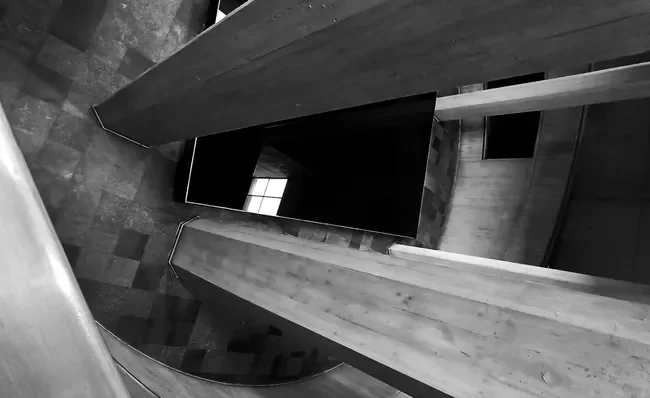
- Location: Tehran, Tehran Province, Iran
Aali Qapu Palace, located on the western side of Naqsh-e Jahan Square in Isfahan, Iran, is a stunning example of Safavid architecture. Built in the early 17th century, this grand palace served as the official residence of Shah Abbas I and was used for entertaining guests and dignitaries. The six-story building features intricate frescoes, elaborate tile work, and beautiful wooden ceilings. One of the palace’s highlights is the Music Room on the top floor, known for its unique stucco decorations that enhance the acoustics for live performances. Visitors can also enjoy panoramic views of Naqsh-e Jahan Square and its surrounding landmarks from the palace’s terrace. Aali Qapu Palace offers a fascinating glimpse into the opulence and grandeur of the Safavid era and is a must-visit for those exploring Isfahan’s rich cultural heritage.
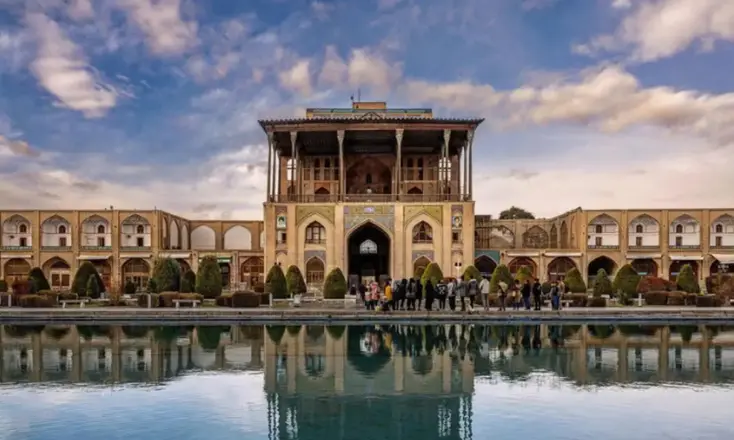
- Location: Isfahan, Isfahan Province, Iran
Saadi Tomb
The Tomb of Saadi, located in Shiraz, Iran, is a beautiful mausoleum dedicated to the famous Persian poet Saadi, also known as Saadi Shirazi. Set within a tranquil garden, the tomb complex offers a serene environment for reflection and appreciation of Saadi’s literary contributions. The mausoleum itself features elegant architecture with a simple yet striking design, including a domed structure and intricate tile work. Inside, visitors can find Saadi’s tombstone, inscribed with excerpts from his poetry. The surrounding garden, known as Saadieh, is adorned with fountains, pathways, and lush greenery, providing a peaceful retreat for visitors. The Tomb of Saadi is a must-visit for literature enthusiasts and those interested in Persian culture, offering a chance to connect with the timeless works of one of Iran’s greatest poets.
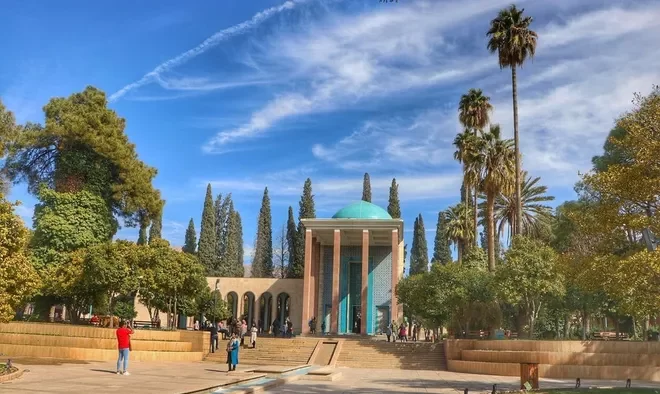
- Location: District 3, Shiraz
Dizin International Ski Resort
Dizin International Ski Resort, located in the Alborz mountain range near Tehran, Iran, is one of the premier ski destinations in the country and the Middle East. Established in 1969, Dizin offers excellent skiing and snowboarding opportunities with a variety of slopes catering to different skill levels. The resort features modern facilities, including ski lifts, rental shops, and several hotels and restaurants, ensuring a comfortable and enjoyable experience for visitors. The high altitude of Dizin, with its peak reaching 3,600 meters, guarantees a long ski season from late November to early May. In addition to skiing, visitors can enjoy snowboarding, snowshoeing, and taking in the breathtaking mountain scenery. Dizin International Ski Resort is a must-visit for winter sports enthusiasts and those looking to experience Iran’s beautiful alpine landscapes.

- Location: 2CX8+3XJ, Gajereh, Alborz Province
Monastery of Saint Stepanos
The Monastery of Saint Stepanos, located in the picturesque Jolfa region of northwest Iran, near the border with Armenia, is a historic Armenian monastery dating back to the 9th century. Nestled in a lush, green valley along the Aras River, the monastery is renowned for its stunning architecture and serene surroundings. The complex features beautiful stone carvings, intricate frescoes, and a distinctive conical dome, reflecting a blend of Armenian and Persian architectural styles. Visitors can explore the church, the bell tower, and the surrounding fortifications, all of which provide a glimpse into the rich cultural and religious history of the Armenian community in Iran. The Monastery of Saint Stepanos is a peaceful retreat for those seeking spiritual reflection and a deeper understanding of Iran’s diverse heritage.
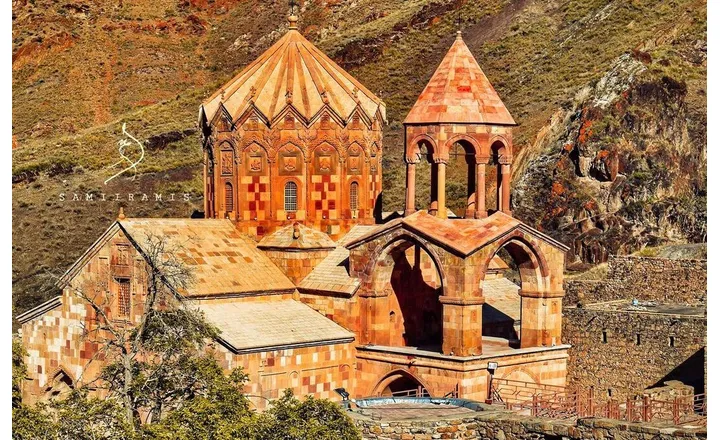
- Location: East Azerbaijan Province, Iran
Fin Garden, located in Kashan, Iran, is one of the most beautiful and historic Persian gardens, dating back to the early 16th century. This UNESCO World Heritage Site exemplifies the traditional Persian garden design, combining architectural elegance with natural beauty. The garden features lush greenery, vibrant flowerbeds, and a series of flowing water channels and fountains, all fed by a natural spring. The central pavilion, with its intricate tile work and elegant design, offers a serene spot to relax and enjoy the surroundings. Visitors can also explore the small museum within the garden, which provides insights into the site’s history and significance. Fin Garden, along with Kashan’s historical houses, make this city a wonderland through Iran’s history and culture.
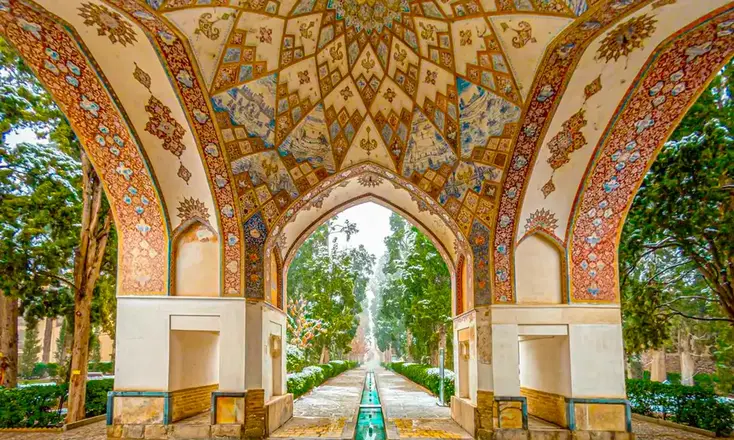
- Location: Isfahan, Kashan, Amir Kabir St
Jameh Mosque of Yazd
The Jameh Mosque of Yazd, located in the historic city of Yazd, Iran, is an architectural masterpiece and one of the most iconic landmarks in the region. Dating back to the 12th century, this mosque is renowned for its stunning Persian-Islamic architecture, featuring an impressive entrance portal adorned with intricate tile work and two towering minarets, which are among the tallest in Iran. The mosque’s interior boasts a beautifully decorated prayer hall, intricate mosaics, and exquisite calligraphy, showcasing the artistic achievements of the Timurid era. The serene courtyard, framed by arched arcades, provides a tranquil space for reflection and prayer. The Jameh Mosque of Yazd is a must-visit for history enthusiasts and admirers of Islamic architecture, offering a glimpse into the rich cultural and religious heritage of Yazd.
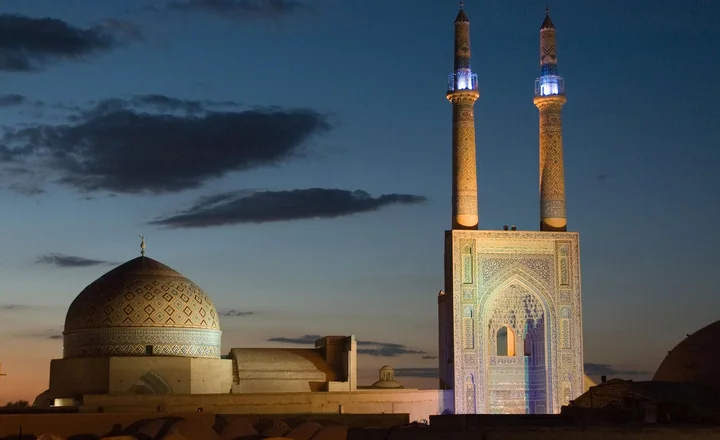
- Location: Yazd Province, Yazd, Masjed Jame’ St
The Desert of Varzaneh, located near the town of Varzaneh in Isfahan Province, Iran, is a stunning and serene destination known for its vast sand dunes and unique natural beauty. This desert is one of the most accessible from the city of Isfahan, making it a popular spot for tourists seeking an authentic desert experience. Visitors can explore the towering dunes, enjoy activities such as camel riding, sandboarding, and off-road driving, or simply take in the breathtaking landscapes. The desert is also famous for its picturesque sunsets and starry night skies, offering a perfect setting for photography and stargazing. The nearby Salt Lake and the historic Gavkhooni Wetland add to the area’s diverse attractions. The Desert of Varzaneh is a must-visit for nature lovers and adventure seekers looking to experience the tranquility and beauty of Iran’s desert landscapes.
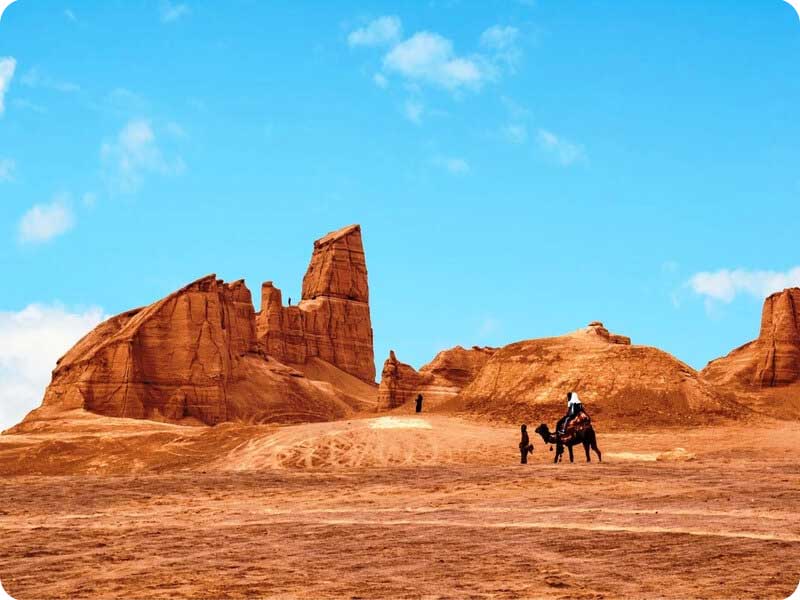
- Location: Varzaneh Desert Isfahan Province
Shah Mosque
The Shah Mosque, also known as the Imam Mosque, is a magnificent example of Persian architecture located on the southern side of Naqsh-e Jahan Square in Isfahan, Iran. Built during the Safavid era in the early 17th century, this UNESCO World Heritage Site is renowned for its stunning blue-tiled mosaics, towering minarets, and grand entrance portal. The mosque features a large central courtyard, surrounded by beautifully decorated arcades and a main prayer hall with an impressive domed ceiling. The intricate tile work, calligraphy, and geometric patterns throughout the mosque showcase the artistic and architectural brilliance of the period. Visitors can admire the mosque’s symmetry, acoustics, and the play of light and color within its walls. The Shah Mosque is a must-visit for anyone exploring Isfahan, offering a glimpse into the grandeur of Islamic art and architecture.
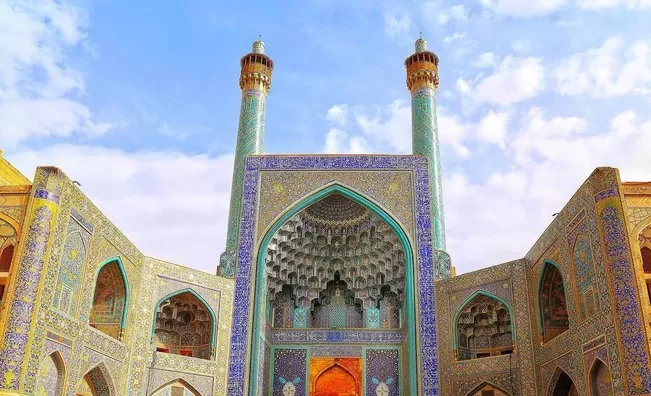
- Location: Isfahan Province , Iran
The Tomb of Ferdowsi, located in the city of Tus near Mashhad, Iran, is a revered monument dedicated to the celebrated Persian poet Ferdowsi, the author of the epic poem “Shahnameh” (The Book of Kings). The mausoleum, designed in a style reminiscent of Achaemenid architecture, features a large marble structure adorned with inscriptions and reliefs depicting scenes from Ferdowsi’s work. The surrounding garden provides a peaceful and contemplative setting, perfect for reflecting on the poet’s contributions to Persian literature and culture. Visitors can explore the tomb, learn about Ferdowsi’s life and legacy, and enjoy the serene atmosphere of the beautifully landscaped grounds. The Tomb of Ferdowsi is a must-visit for literature enthusiasts and those interested in Persian history, offering a deep connection to Iran’s rich cultural heritage.
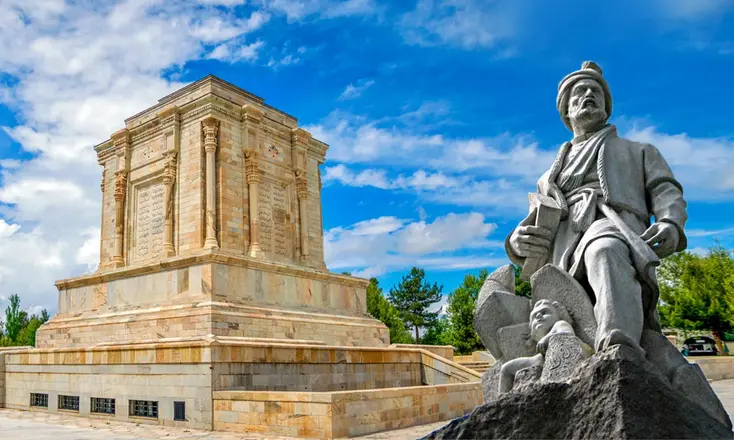
- Location: Tous, Razavi Khorasan Province
Milad Tower
Milad Tower, located in Tehran, Iran, is the sixth-tallest tower in the world and a prominent symbol of the city. Standing at 435 meters, the tower offers stunning panoramic views of Tehran and the surrounding mountains. Visitors can take a high-speed elevator to the observation deck, which provides a breathtaking 360-degree view of the city. The tower also features a revolving restaurant, a museum, a sky dome, and various exhibition spaces. Milad Tower is a must-visit for those looking to see Tehran from a new perspective, enjoy fine dining with a view, and experience one of the city’s modern architectural marvels. It’s an ideal spot for both sightseeing and relaxation, offering a unique vantage point to appreciate the beauty and vastness of Iran’s capital.
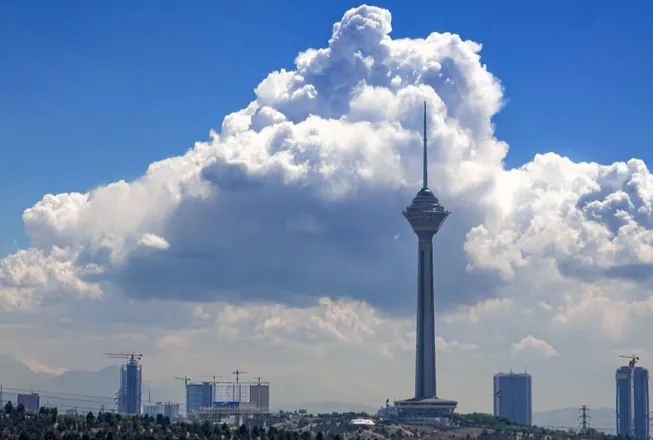
- Location: Tehran, Tehran Province, Iran
Chahkooh Canyon
Chahkooh Canyon, located on Qeshm Island in the Persian Gulf, Iran, is a stunning natural wonder known for its dramatic geological formations. The canyon features towering walls, narrow passages, and unique rock formations carved by centuries of erosion. Visitors can explore the maze-like paths, marvel at the intricate patterns etched into the canyon walls, and enjoy the serene and otherworldly atmosphere. The best time to visit is during the cooler months when the weather is pleasant for hiking and photography. Chahkooh Canyon is a must-visit for nature enthusiasts, adventurers, and anyone interested in the geological beauty of Iran. Don’t forget to bring water and wear comfortable shoes for the trek.
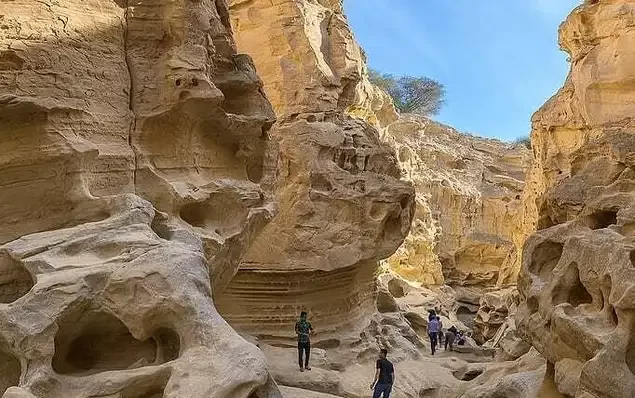
- Location: Hormozgan Province, Chahu Sharghi
House of Lucie
House of Lucie Gallery is a contemporary photography space presenting rotating exhibitions, lectures, workshops, and events.
The House of Lucie, located in the historic city of Kashan, Iran, is a beautifully restored traditional Persian house that now serves as a boutique hotel and cultural center. This elegant residence combines traditional Persian architecture with modern amenities, offering visitors a unique and comfortable stay. The house features stunning courtyards, intricate tile work, stained glass windows, and beautifully decorated rooms that reflect the rich cultural heritage of Kashan. Guests can enjoy authentic Persian cuisine at the on-site restaurant, relax in the tranquil gardens, and explore nearby attractions such as the historic Fin Garden and the Agha Bozorg Mosque. The House of Lucie provides a perfect blend of history, culture, and hospitality, making it an ideal choice for travelers seeking an immersive experience in Kashan.
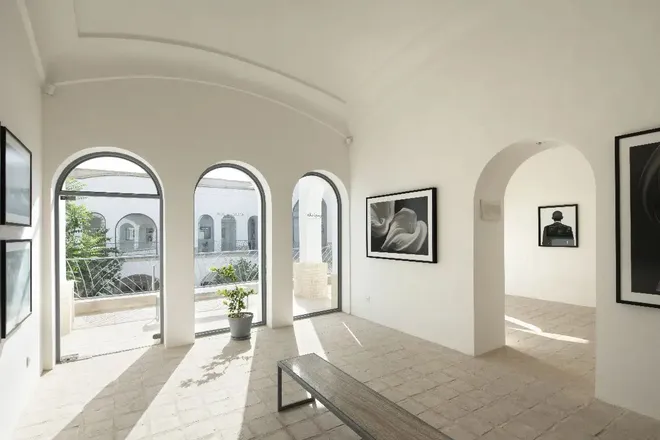
- Location: Kashan, Isfahan Province
Valiasr Street
Valiasr Street, stretching over 17 kilometers from the north to the south of Tehran, Iran, is the longest street in the Middle East and a vibrant artery of the city. This iconic street connects the affluent neighborhoods of Tajrish in the north with the bustling Rah Ahan Square in the south, offering a diverse array of attractions along its length. Visitors can enjoy a variety of shopping experiences, from luxury boutiques to traditional bazaars, and sample delicious Persian cuisine in numerous cafes and restaurants. The street is lined with plane trees, providing a picturesque and shaded walkway, especially beautiful in autumn. Key landmarks along Valiasr Street include Saei Park, Mellat Park, and the historic Ferdows Garden. Valiasr Street is a must-visit for anyone wanting to experience the dynamic culture, history, and everyday life of Tehran.
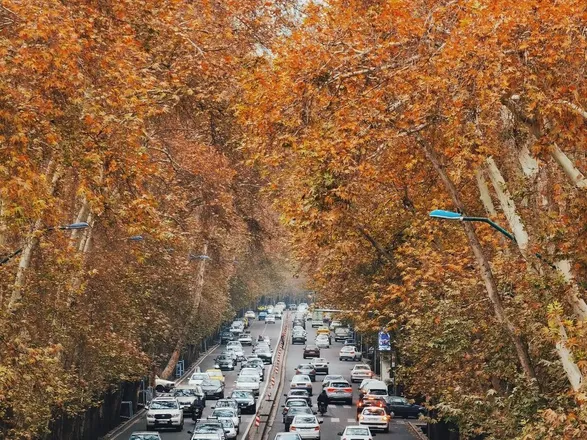
- Location: Tehran Province, Iran
Badab-e Surt
Badab-e Surt, located in the Mazandaran Province of northern Iran, is a natural wonder known for its stunning terraced hot springs. This unique geological formation consists of stepped terraces made of travertine, a type of limestone deposited by mineral springs. The springs’ water, rich in iron oxide and calcium, creates vibrant red, orange, and yellow hues across the terraces, offering a mesmerizing and otherworldly landscape. Visitors can explore the terraces, enjoy the tranquil atmosphere, and take in the breathtaking views of the surrounding forest and mountains. The best time to visit Badab-e Surt is during sunrise or sunset when the light enhances the vivid colors of the terraces. It is a must-visit destination for nature lovers, photographers, and anyone seeking to experience one of Iran’s most beautiful natural landscapes. Comfortable walking shoes and plenty of water are recommended for the visit.
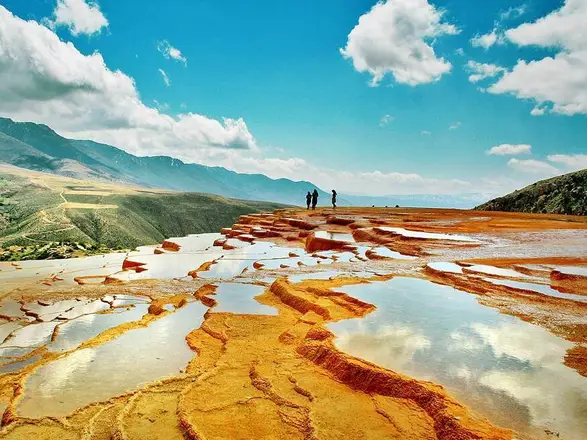
- Location: Orost, Badab Soort Road
Amir Chaghmagh Complex
The Amir Chakhmaq Complex, located in the historic city of Yazd, Iran, is a stunning architectural ensemble that serves as a major landmark and social hub. This 15th-century complex, named after its founder Amir Jalaleddin Chakhmaq, includes a majestic mosque, a traditional bazaar, a tekyeh (a building used for religious ceremonies), and a series of public baths. The most iconic feature of the complex is the impressive three-story facade with symmetrical alcoves, beautifully illuminated at night, creating a mesmerizing sight. Visitors can explore the intricate tile work and architecture of the mosque, browse the shops in the bustling bazaar, and experience the local culture and hospitality. The Amir Chakhmaq Complex is a must-visit for those interested in Persian architecture, history, and the vibrant culture of Yazd.
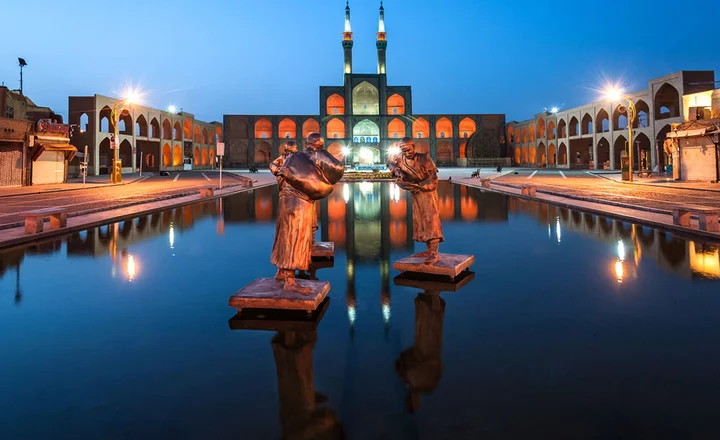
- Location: V9VC+923, Yazd, Yazd Province, Iran
Tabiat Bridge
The Tabiat Bridge, located in Tehran, Iran, is a modern architectural marvel and one of the city’s most popular attractions. Designed by architect Leila Araghian, this award-winning pedestrian bridge spans over 270 meters, connecting two major parks—Taleghani Park and Abo-Atash Park. The bridge features three levels with ample space for walking, sitting, and enjoying panoramic views of the city and the Alborz mountains. Its innovative design includes wide pathways, green spaces, and cafes, making it a perfect spot for leisurely strolls, socializing, and relaxation. The Tabiat Bridge is especially beautiful at night when it’s illuminated, creating a vibrant and welcoming atmosphere. A visit to this bridge offers a unique blend of nature and modernity, providing a serene escape in the heart of Tehran.
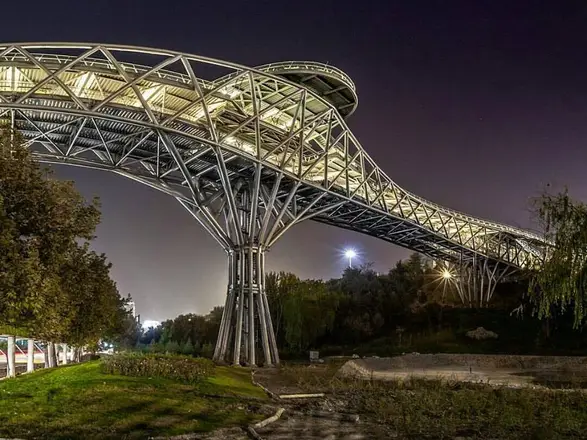
- Location: Tehran, Tagrah Shahid Modares
Tehran Grand Bazaar
The Tehran Grand Bazaar, located in the heart of Iran’s capital, is a bustling and historic marketplace that has been a center of commerce for centuries. Spanning over 10 kilometers of winding corridors, this vibrant bazaar offers a vast array of goods, including textiles, spices, jewelry, carpets, and traditional crafts. Visitors can immerse themselves in the lively atmosphere, haggle with vendors, and explore the rich cultural heritage reflected in the architecture and layout of the bazaar. Key attractions within the bazaar include the Timcheh-ye Amin o Dowleh, a beautifully decorated arcade, and several historic mosques and caravanserais. The Tehran Grand Bazaar is a must-visit for those looking to experience the daily life, commerce, and culture of Tehran. Comfortable walking shoes and a keen sense of adventure are recommended for navigating this expansive and dynamic marketplace.
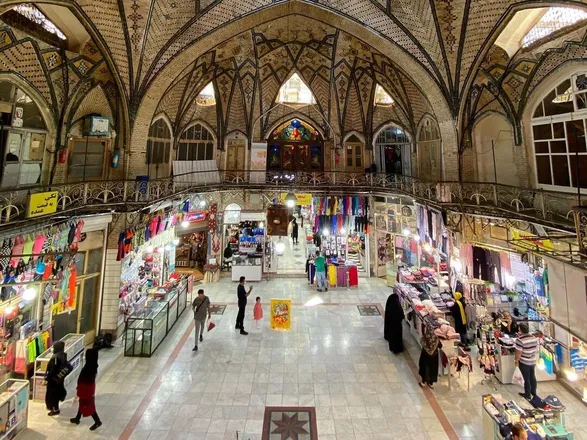
- Location: Tehran, Panzdah-e-Khordad St
Top Things to Do in Tehran
Are you only visiting Iran’s capital and don’t have time to explore other Iran’s attractions? Let’s save you some time by listing Tehran attractions only. Here are the top things to do in Tehran to enrich your Iran trip.
Golestan Palace
- Location: Arg Square, Tehran
- Highlights: Magnificent architecture, vibrant tile and mirror work, Marble Throne, Hall of Mirrors, Shams-ol-Emareh Tower, and Beautiful gardens.
National Museum of Iran
- Location: 30 Tir Street, Tehran
- Highlights: Vast collection of ancient artifacts, such as relics from Persepolis, pottery from Susa, and the famous Salt Man.
Tehran Grand Bazaar
- Location: 15 Khordad Square, Tehran
- Highlights: Tehran’s central trading hub, historic architecture, traditional teahouses, and diverse shops selling various goods.
Tehran Museum of Contemporary Art (TMoCA)
- Location: Near Laleh Park, Kargar Street, Tehran
- Highlights: One of the largest modern art collections in the Middle East, it includes works by Picasso, Warhol, and other Iranian artists. It also has a unique architectural style.
Milad Tower
- Location: Shahrak-e Gharb District, Tehran
- Highlights: It’s the tallest building in Iran, with a height of 435 meters. It offers observation decks, 360-degree views of the city, a revolving restaurant, cafes, occasional exhibitions, and bungee jumping.
Sa’dabad Complex
- Location: Darband Valley, northern Tehran
- Highlights: 18 buildings with museums featuring royal artifacts, art, and cultural exhibitions.
Darband
- Location: Northern Tehran, near the Sa’dabad Complex
- Highlights: beautiful mountain trails, traditional tea houses, and outdoor cafes along a scenic river.
Tochal Mountain and Tochal Ski Resort
- Location: Northern Tehran, accessible via Velenjak
- Highlights: Mountain views of Tehran, hiking trails, cable car, and skiing facilities.
Carpet Museum of Iran
- Location: Next to Laleh Park, Tehran
- Highlights: It includes a vast collection of Persian carpets from various regions of Iran, showcasing intricate designs, weaving techniques, and the history of carpet-making.
Dizin Ski Resort
- Location: Alborz Mountains, about 70 km north of Tehran
- Highlights: One of the most popular ski resorts in Iran. Dizin has advanced skiing facilities for both beginners and professionals.
Iran’s Famous Things to Buy
After visiting Iran’s top attractions, it’s time to buy some souvenirs. This way, you’ll keep a little remembrance of your Iran trip. Here, we have a list of the best things you can buy in Iran. They are generally found in most major Iranian shopping centers, especially traditional places like Bazaars.
- Saffron: Iranian saffron has the finest quality in the world because of its strong aroma, color, and flavor.
- Pistachios: Iran is one of the major producers of Pistachio in the world.
- Enamelware (Minakari): Intricate hand-painted designs on copper plates, vases, and bowls, often in shades of blue, white, and gold.
- Khatamkari (Marquetry): It’s one of the traditional Persian arts. Khatamkari is the act of covering surfaces with tiny wooden or bone pieces to create intricate patterns.
- Persian Calligraphy Art: This awe-inspiring art has been developed over hundreds of years. Persian calligraphy is often combined with poetry.
- Termeh (Traditional Iranian Fabric): It’s a traditional Persian textile usually hand-woven on high-quality fabrics, like silk.
- Copperware: You can find beautiful copperware in Iran, usually hammered by hand.
- Turquoise and Other Jewelry Stones: Iran’s turquoise is famous worldwide for its quality and color.
- Persian Carpets and Rugs: Persian rugs are a brand worldwide for their unique and intricate patterns.
- Pottery and ceramics: Iranian pottery is an 8000-year-old tradition that has survived to this day.
Things to Do in Iran: Best Persian Dishes
Iran’s top tourist destinations are undoubtedly among the top things to do in Iran. However, they’re not complete without tasting Persian dishes.
We asked our beloved Persian friends to name their favorite dishes. Then, we gathered their answers and created this list. Take a look at this list of the most delicious Persian foods adored by the Iranians themselves!
Sabzi Polo – Fragrant Herb Rice
Sabzi Polo is a fragrant Persian rice dish made with a mix of fresh herbs like dill, cilantro, parsley, and fenugreek, cooked to perfection with saffron. It is traditionally served with fish, especially during Nowruz (Persian New Year), symbolizing renewal and prosperity. The combination of fluffy, aromatic rice and perfectly seasoned fish makes this dish a favorite among Iranians.
Dizi – Persian Lamb Stew
Dizi, also known as Abgoosht, is one of Iran’s most traditional and beloved meals. This hearty stew is slow-cooked in a clay pot, combining lamb, chickpeas, potatoes, tomatoes, and dried lime. The broth is poured into a bowl and soaked up with bread, while the remaining solid ingredients are mashed together and eaten with fresh herbs and pickles. Enjoying Dizi in a traditional Persian teahouse is one of the most authentic things to do in Iran for food lovers.
Ghormeh Sabzi – Persian Herb Stew
Ghormeh Sabzi is often considered the national dish of Iran and a staple of Persian households. This rich and flavorful stew is made with slow-cooked herbs, red kidney beans, dried limes, and tender chunks of beef or lamb. The tangy taste from the dried limes, combined with the deep green color of sautéed herbs, makes this dish truly unique. Served with saffron-infused rice, it is a must-try for any visitor.
Ghalieh Mahi – Persian Spicy Fish Stew
A specialty from southern Iran, Ghalieh Mahi is a delicious seafood dish bursting with bold flavors. Made with fish, tamarind, fresh coriander, garlic, and fenugreek, this stew has a unique tangy and slightly spicy taste. If you find yourself exploring the Persian Gulf coastline, trying Ghalieh Mahi is one of the essential things to do in Iran for food lovers.
Gheymeh Nesar – Royal Persian Rice Dish
Gheymeh Nesar is a luxurious Persian rice dish that originates from Qazvin, a city known for its rich culinary heritage. This dish features saffron-infused rice layered with tender chunks of lamb or beef, slivered almonds and pistachios, barberries, and fragrant spices. The balance of sweet and savory flavors makes it a true Persian delicacy.
Baghali Polo – Dill and Fava Bean Rice
Baghali Polo is one of Iran’s most beloved rice dishes, made with dill and fava beans and often served with slow-cooked lamb shank. The delicate aroma of dill combined with the tender, juicy lamb creates a mouthwatering dish that is both comforting and elegant. It is commonly served at weddings and festive gatherings.
Tahchin – Persian Saffron Rice Cake
Tahchin is a beautifully layered Persian rice dish made with yogurt, saffron, and chicken or lamb, baked to golden perfection. The crispy rice crust, known as tahdig, is the highlight of this dish, offering a crunchy contrast to the soft, flavorful rice inside. This visually stunning and delicious dish is a must-try for anyone visiting Iran.
Fesenjoon – Walnut and Pomegranate Stew
Fesenjoon is a unique and indulgent Persian stew made with ground walnuts, pomegranate molasses, and slow-cooked chicken or duck. The combination of the rich nuttiness from the walnuts and the sweet-tangy taste of the pomegranate creates a deeply flavorful dish. It is often served at special occasions and celebrations, making it one of the most iconic Persian meals.
Zereshk Polo – Barberry Rice with Saffron Chicken
Zereshk Polo is a visually striking and delicious dish, featuring fluffy Persian rice mixed with tart barberries, saffron, and butter. It is typically served with succulent saffron-infused chicken. The contrast between the slightly sour barberries and the fragrant saffron makes this dish a favorite among both locals and tourists.
Kebab
Persian cuisine is famous for its variety of kebabs, each offering a unique and flavorful experience. Some of the most popular kebabs include:
- Koobideh – Minced lamb or beef, seasoned with onions and spices, grilled on skewers.
- Barg – Thinly sliced marinated lamb or beef fillet, grilled to perfection.
- Joojeh Kebab – Saffron-marinated chicken, tender and juicy.
- Shishlik – Lamb chops grilled with Persian spices, a specialty of Mashhad.
Enjoying an authentic Persian kebab with grilled tomatoes, saffron rice, and fresh bread is one of the best things to do in Iran for any food lover.
Kaleh Joosh – Persian Walnut and Whey Soup
Kaleh Joosh is a simple yet flavorful Persian soup made with kashk (fermented whey), ground walnuts, onions, and aromatic spices like turmeric and mint. This dish originates from central and western Iran, where it has been a staple for centuries. It is traditionally served with lavash or sangak bread, allowing diners to soak up the rich, creamy broth.
Paleh Kebab
Paleh Kebab is prepared using Paleh fish (Caspian kutum), which is a popular fish in northern Iran, particularly in Gilan and Mazandaran. The fish is cleaned, marinated with garlic, lemon juice, olive oil, turmeric, salt, and pepper, then grilled over an open flame. Sometimes, local herbs like coriander and fenugreek are also added for extra aroma and taste.
Ash Reshteh – Persian Noodle Soup
Ash Reshteh is a thick and hearty soup made with Persian noodles, beans, spinach, and herbs, topped with kashk (a fermented whey sauce), fried onions, and garlic. This dish is especially popular during Nowruz, the Persian New Year, and is often enjoyed in the colder months. It is both filling and packed with nutrients.
Ash Tarkhineh – Fermented Wheat and Yogurt Soup
Ash Tarkhineh is a unique Persian soup made with tarkhineh, a fermented mixture of wheat and yogurt that is dried and later cooked into a thick, tangy soup with vegetables and beans. It is especially popular in western Iran and is known for its probiotic benefits.
Khoresht Khalal – Kermanshah’s Almond and Saffron Stew
Khoresht Khalal is a luxurious and flavorful Persian stew that originates from Kermanshah, in western Iran. This dish is known for its rich saffron-infused broth, tender meat, and the delicate crunch of slivered almonds, making it one of Iran’s most unique and elegant stews.
Jaghoor Baghoor – Persian Fried Liver Dish
Jaghoor Baghoor is a delicious and hearty Persian dish made from lamb liver, commonly enjoyed in Tabriz and other parts of Azerbaijan Province in northwestern Iran. This dish is especially popular among those who enjoy rich, iron-packed foods and is often served as a breakfast or street food in local eateries.
Last Word
We saw some of the best things you can do in Iran. From visiting UNESCO World Heritage sites, like Persepolis, Shushtar Historical Hydraulic System, and the Golestan Palace, to astonishing natural landscapes, like Iran’s northern forests, Ali Sadr Cave, and the colorful island of Hormuz, the list of Iran’s top attractions goes on forever!
Even though we’ve covered the best tourist attractions in Iran, we suggest you explore the country yourself. Rent a car and drive through the landscape. Walk through the streets in Iran. Participate in its cultural ceremonies. And make sure you’ll have a memorable trip to this wonderful country.
FAQ
What are the top tourist attractions in Iran?
Popular attractions include Persepolis, Naqsh-e Jahan Square, Golestan Palace, and the deserts of Yazd.
Is Iran a good country for cultural tourism?
Yes, Iran offers rich historical and cultural experiences through ancient architecture, traditional bazaars, and Persian cuisine.
What outdoor activities can you do in Iran?
Travelers can enjoy skiing, desert trekking, hiking in the Alborz Mountains, and beach visits along the Persian Gulf.
Are there UNESCO World Heritage Sites in Iran?
Yes, Iran is home to several UNESCO sites, including Persepolis, Bam, and the Historic City of Yazd.
Can tourists explore Iran on a budget?
Absolutely. Iran is known for being an affordable travel destination with low-cost food, accommodation, and transportation.
What is Iran best known for?
Iran is best known for its rich history, ancient Persian architecture, diverse landscapes, and warm hospitality.
Can foreigners visit Iran?
Yes, foreigners can visit Iran with a valid visa, and many nationalities are eligible for e-visas or visa on arrival.
Is 100 USD a lot in Iran?
Yes, due to the exchange rate, $100 USD can go a long way in Iran, covering several days of meals, transport, and local attractions.
